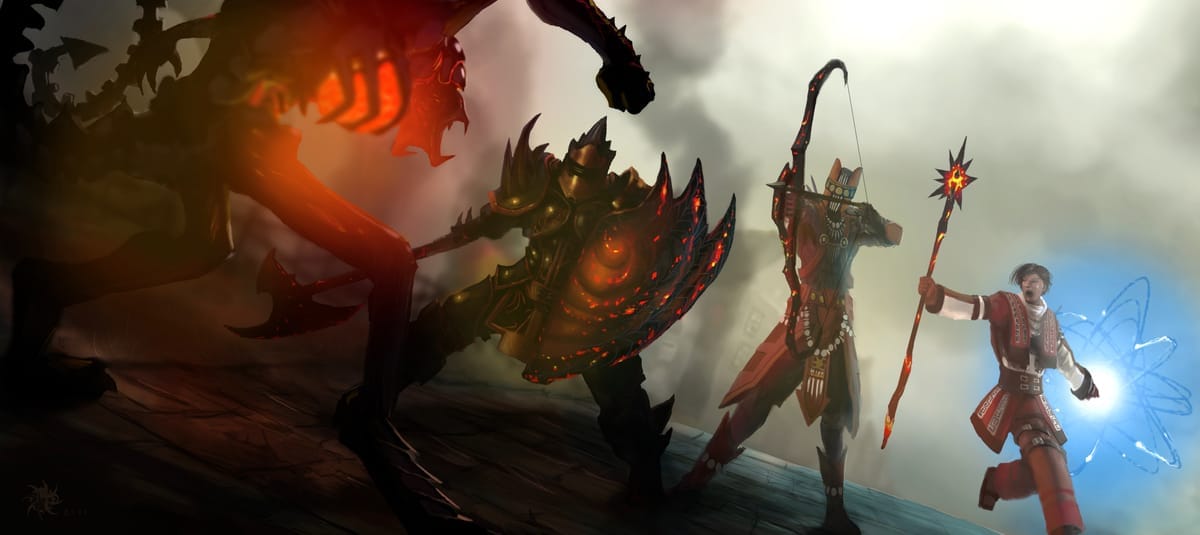What Playing a Monk in Guild Wars Teaches About Leadership

In Guild Wars, the monk was the game’s dedicated healer class, responsible for keeping the party alive through a mix of restorative magic and protective spells. To many players, it looked slow and uneventful, standing at the back, casting heals, and never landing the killing blow. As a result, monks were notoriously hard to find for a party. But those who played the role knew the truth: the monk’s position in the backline offered the best view of the battlefield, the highest level of responsibility, and more action-packed decision-making than any frontline fighter could imagine. In many ways, the monk was the invisible leader, quietly guiding the flow of combat and determining whether the team would triumph or fall.
Set in a world where small, skill-based teams relied on coordination and timing rather than raw stats, Guild Wars was an online RPG built for moments of intense cooperation. One of its most memorable moments came in the mission Thunderhead Keep, where players were tasked with defending a dwarven stronghold against relentless waves of enemies. As a monk in this mission, the pressure was unrelenting: every ally’s health bar dipped and spiked in seconds, NPCs screamed for aid, and the courtyard was a constant blur of steel, magic, and chaos. From my position at the back, I could see the entire battle unfold: the warriors locking the chokepoints, the elementalists hurling spells over the walls, and the subtle but deadly shifts when enemies broke through our lines. It was in moments like these that the monk’s role as both healer and battlefield commander became undeniable.
Situational Awareness
From the backline, a monk had a perspective no other role could match. You were not focused on a single duel or locked into a narrow cone of vision. You saw the entire battlefield. This vantage point revealed which enemies were overextending, when a frontline was about to collapse, and where a single well-timed spell could turn the tide. In Thunderhead Keep, it meant spotting an enemy push before it broke through the gates, calling for reinforcements to a crumbling chokepoint, or preemptively protecting an ally who was about to be targeted by a spike.
In leadership, situational awareness works much the same way. Leaders who step back to see the bigger picture can make better decisions, anticipate challenges before they become crises, and position their teams for success. It is not just about reacting, it is about reading the flow of events and shaping outcomes before the critical moment arrives. The best leaders, like the best monks, are those who can monitor the whole field, manage resources wisely, and act decisively when it matters most.
Critical but Invisible Roles
A monk’s contribution was rarely the focus of attention. Victories were often attributed to the damage dealers who delivered the final blow or the frontline heroes who held their ground. Yet without the quiet work happening in the backline, those moments of glory would never have happened. The monk was the safety net, the stabilizer, and the quiet force that allowed others to shine.
Many workplaces have their own “monks.” These are the people who keep operations running smoothly, manage unseen risks, and ensure the team can perform at its best. They are not always in the spotlight, but their work makes success possible. Effective leaders recognize and value these roles, knowing that celebrating visible achievements is not enough. Sustained success depends on the strength of the people whose efforts often go unnoticed.
Responsibility Under Pressure
Playing a monk meant carrying a level of responsibility that few other roles experienced. A single mistake could mean the loss of an ally, and a chain of mistakes could wipe the entire team. Every choice mattered, from deciding who to save when several allies were in danger to managing limited energy so there was enough left for the next crisis. In Thunderhead Keep, this pressure was constant, with wave after wave of enemies testing both skill and focus.
In leadership, there are moments that mirror this experience. High-pressure situations often demand split-second decisions based on incomplete information. Leaders must balance immediate needs with long-term sustainability, just as a monk balances healing now with conserving resources for what is still to come. The ability to stay calm, think clearly, and act with purpose under these conditions is what often separates good leaders from great ones.
Never join a raid without a Monk
The monk in Guild Wars was more than a healer. It was a role that demanded constant awareness, trust from the team, and the courage to make difficult calls when the stakes were high. It proved that leadership does not always come from the frontlines. Sometimes it comes from those who watch the whole field, anticipate the next move, and quietly make sure everyone else can do their job.
In many teams, both in games and in the workplace, there are people who carry this kind of quiet responsibility. They may not be the most visible, but they are often the ones who decide whether the team succeeds or fails. If you have ever played a “monk” in your career, you know the value of that perspective.
